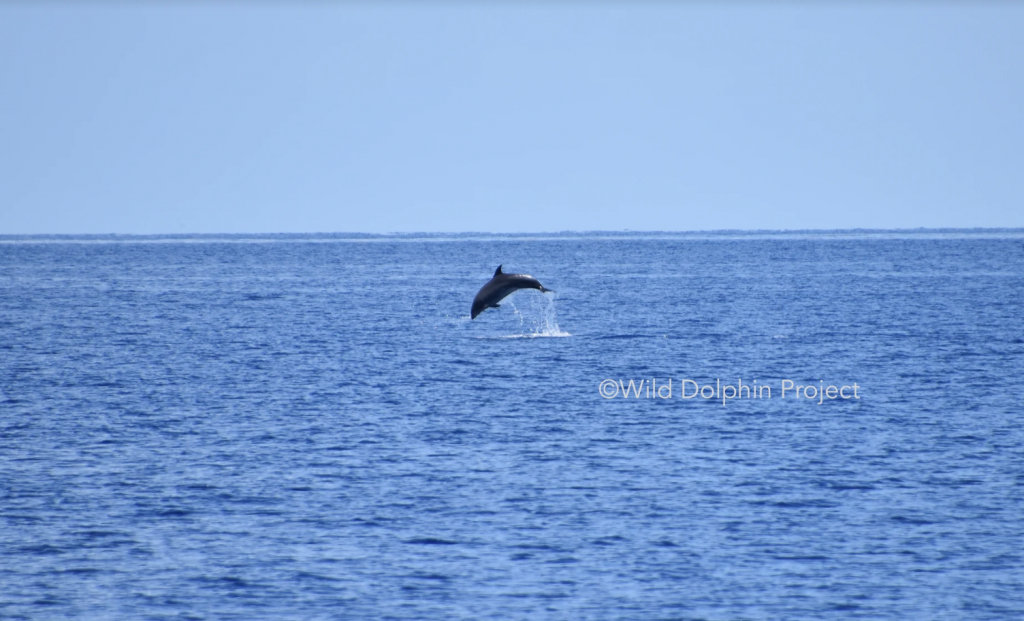
In the Bahamas, we study two species dolphins at our field site: the Atlantic spotted dolphin (Stenalla frontalis) and the Atlantic bottlenose dolphin (Tursiops truncatus). These are both members of the family Delphinidae, the oceanic dolphins.
We spend a lot of our time focusing on the spotteds, but in this blog we’re going to introduce you to the bottlenose!
The bottlenose dolphin occurs around the world in temperate and tropical waters, and can be found both offshore and in coastal waters, like bays, harbors, gulfs and estuaries. They are one of the most easily viewed marine mammals since they are live close to shore and are also one of the most well-studied.
Generally, these dolphins reach lengths around 10 to 14 feet and weigh over 1,000 pounds. However, their size can also depend on where they live. That’s because there are actually two varieties, or ecotypes, of the bottlenose dolphin: offshore and coastal.
In the Bahamas, we study the coastal bottlenose, which are relatively smaller, reaching lengths up to nearly 8 feet (2.4 meters). They hang out on the sandbank in shallow waters, hunting for fish in the seagrass and sand. When we see them, we take surface photographs of their dorsal fins to track individuals. We record group size, behavior, water depth, temperature and habitat.

Sometimes, while traveling to our sites, we find the much larger offshore ecotype. These dolphins live in deep water in the middle of the ocean. So, we spot them crossing over from Florida to the Bahamas in the Gulf Stream, or when we cross the Providence Channel from Grand Bahama to Bimini. Often times, they will approach our boat to catch a free ride on the bow. Other times, and especially on flat days, we see them in the distance jumping and leaping.

After a week with the coastal bottlenose, when we see the offshore guys they just look gigantic, especially the pregnant females! In addition to size, an identifying feature of the offshore dolphins — at least where we see them — is that they can have a bit of white on the ridge of their peduncle, the part of their body extending from their dorsal fin to their fluke, though not always.
Little is known about the offshore bottlenose, as they are not as accessible to researchers. We’re lucky to get to see them!

MORE INFORMATION:
Learn more bottlenose dolphins in this National Geographic post and video, which features Dr. Denise Herzing and the Wild Dolphin Project.
